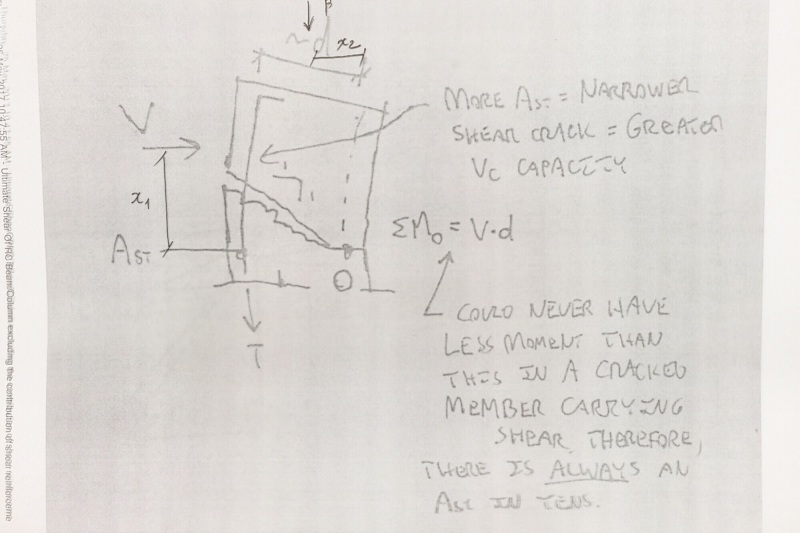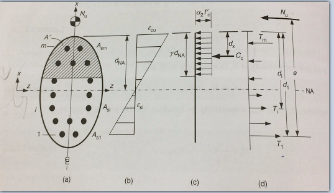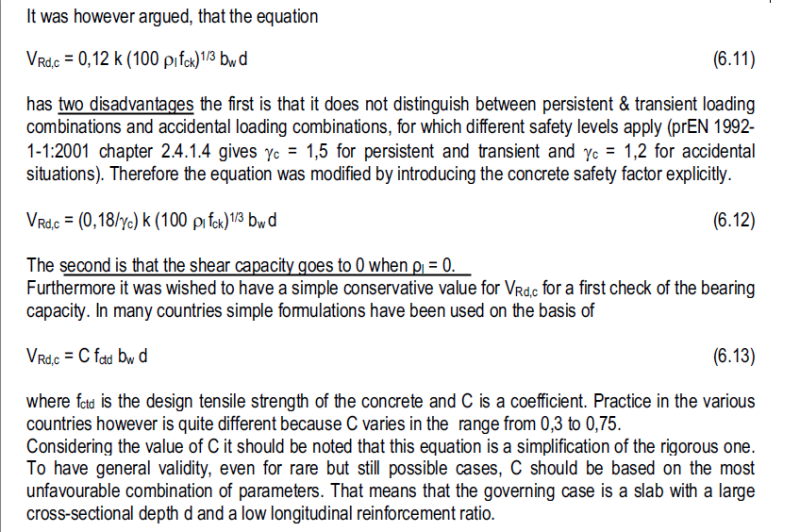NTCONLINE
Structural
- Sep 29, 2012
- 34
Hi everyone,
In most international codes, the shear of the concrete alone (excluding the contribution
from shear reinforcement) is in the form of, for example, in AS3600:
Vuc = Beta1 * Beta2 * Beta3 * bv * do * fcv * (Ast/(bv*do))^ 1/3
Each code has its own expression, but in general, Vuc is mathematically
in a form of a direct function of Ast, which is the steel in tension, under the
load case being considered.
If Ast = 0, (ie. there is no steel in tension at all, or all steel rebars are in compression)
Vuc will be equal to zero, mathematically.
Let's consider a rare scenario, where there is a RC column under only axial force
acting right at the plastic centroid of the column section. Therefore, the axial force
does not cause any bending at all. In this case, based on the above equation,
Vuc = 0, which does not really make any sense to me, because in such a case, the column
shear capacity is even at its highest possible value.
How should I really interpret the parameter "Ast" in the above equation ?
In most international codes, the shear of the concrete alone (excluding the contribution
from shear reinforcement) is in the form of, for example, in AS3600:
Vuc = Beta1 * Beta2 * Beta3 * bv * do * fcv * (Ast/(bv*do))^ 1/3
Each code has its own expression, but in general, Vuc is mathematically
in a form of a direct function of Ast, which is the steel in tension, under the
load case being considered.
If Ast = 0, (ie. there is no steel in tension at all, or all steel rebars are in compression)
Vuc will be equal to zero, mathematically.
Let's consider a rare scenario, where there is a RC column under only axial force
acting right at the plastic centroid of the column section. Therefore, the axial force
does not cause any bending at all. In this case, based on the above equation,
Vuc = 0, which does not really make any sense to me, because in such a case, the column
shear capacity is even at its highest possible value.
How should I really interpret the parameter "Ast" in the above equation ?




